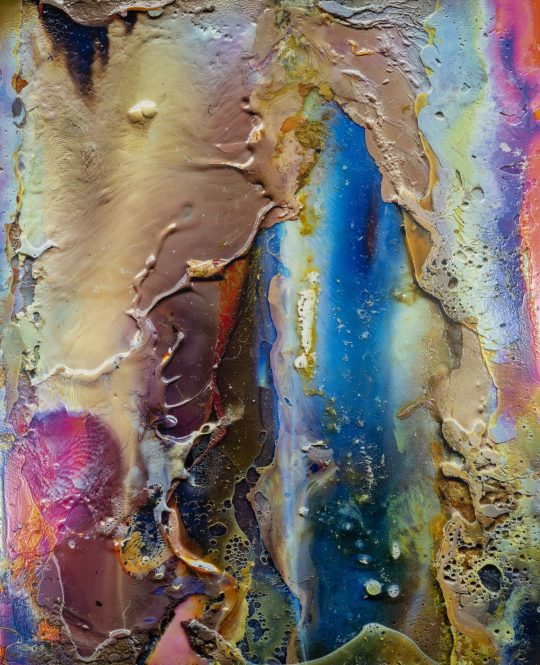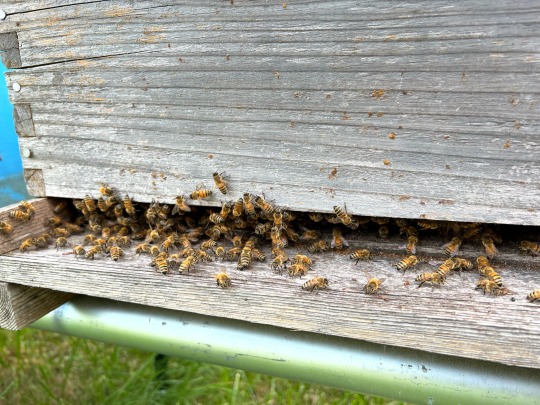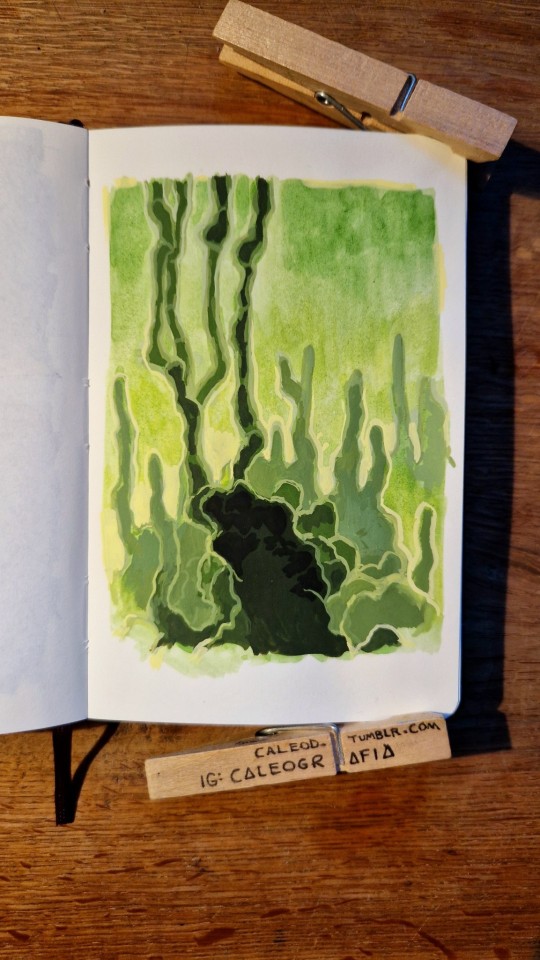#chemical
Text
Chemichael Jackson
Audio ON 🤣
283 notes
·
View notes
Video
Happy Valentine's Day!
Source
515 notes
·
View notes
Text

Daisuke Yokota “Alluvion” 2021,
UV Inkjet Print (StareReap 2.5 print),
100×80cm
#art#abstract#abstraction#forms#abstractart#daisuke yokota#alluvion#uv#inkjet#print#chemical#photography#tactile#sensation#texture
68 notes
·
View notes
Text
Researchers detect a new molecule in space
New Post has been published on https://thedigitalinsider.com/researchers-detect-a-new-molecule-in-space/
Researchers detect a new molecule in space


New research from the group of MIT Professor Brett McGuire has revealed the presence of a previously unknown molecule in space. The team’s open-access paper, “Rotational Spectrum and First Interstellar Detection of 2-Methoxyethanol Using ALMA Observations of NGC 6334I,” appears in April 12 issue of The Astrophysical Journal Letters.
Zachary T.P. Fried, a graduate student in the McGuire group and the lead author of the publication, worked to assemble a puzzle comprised of pieces collected from across the globe, extending beyond MIT to France, Florida, Virginia, and Copenhagen, to achieve this exciting discovery.
“Our group tries to understand what molecules are present in regions of space where stars and solar systems will eventually take shape,” explains Fried. “This allows us to piece together how chemistry evolves alongside the process of star and planet formation. We do this by looking at the rotational spectra of molecules, the unique patterns of light they give off as they tumble end-over-end in space. These patterns are fingerprints (barcodes) for molecules. To detect new molecules in space, we first must have an idea of what molecule we want to look for, then we can record its spectrum in the lab here on Earth, and then finally we look for that spectrum in space using telescopes.”
Searching for molecules in space
The McGuire Group has recently begun to utilize machine learning to suggest good target molecules to search for. In 2023, one of these machine learning models suggested the researchers target a molecule known as 2-methoxyethanol.
“There are a number of ‘methoxy’ molecules in space, like dimethyl ether, methoxymethanol, ethyl methyl ether, and methyl formate, but 2-methoxyethanol would be the largest and most complex ever seen,” says Fried. To detect this molecule using radiotelescope observations, the group first needed to measure and analyze its rotational spectrum on Earth. The researchers combined experiments from the University of Lille (Lille, France), the New College of Florida (Sarasota, Florida), and the McGuire lab at MIT to measure this spectrum over a broadband region of frequencies ranging from the microwave to sub-millimeter wave regimes (approximately 8 to 500 gigahertz).
The data gleaned from these measurements permitted a search for the molecule using Atacama Large Millimeter/submillimeter Array (ALMA) observations toward two separate star-forming regions: NGC 6334I and IRAS 16293-2422B. Members of the McGuire group analyzed these telescope observations alongside researchers at the National Radio Astronomy Observatory (Charlottesville, Virginia) and the University of Copenhagen, Denmark.
“Ultimately, we observed 25 rotational lines of 2-methoxyethanol that lined up with the molecular signal observed toward NGC 6334I (the barcode matched!), thus resulting in a secure detection of 2-methoxyethanol in this source,” says Fried. “This allowed us to then derive physical parameters of the molecule toward NGC 6334I, such as its abundance and excitation temperature. It also enabled an investigation of the possible chemical formation pathways from known interstellar precursors.”
Looking forward
Molecular discoveries like this one help the researchers to better understand the development of molecular complexity in space during the star formation process. 2-methoxyethanol, which contains 13 atoms, is quite large for interstellar standards — as of 2021, only six species larger than 13 atoms were detected outside the solar system, many by McGuire’s group, and all of them existing as ringed structures.
“Continued observations of large molecules and subsequent derivations of their abundances allows us to advance our knowledge of how efficiently large molecules can form and by which specific reactions they may be produced,” says Fried. “Additionally, since we detected this molecule in NGC 6334I but not in IRAS 16293-2422B, we were presented with a unique opportunity to look into how the differing physical conditions of these two sources may be affecting the chemistry that can occur.”
#2023#ALMA#Astronomy#Astrophysics#atoms#chemical#chemistry#college#complexity#data#Denmark#detection#development#Discoveries#earth#ether#fingerprints#form#France#how#interstellar#it#learning#Light#Machine Learning#measure#measurements#members#mit#molecules
17 notes
·
View notes
Photo

Thousand Below - Chemical
#mine#thousand below#chemical#gone in your wake#james deberg#josh thomas#josh billimoria#max santoro#post-hardcore#metalcore#music#music gifs#band blog#others#music blog#lyrics
230 notes
·
View notes
Text
33 notes
·
View notes
Text


Well we have some bad news…
A neighbor got their property sprayed for mosquitoes and a good 90% of my bees were killed off. (This is old news to the company who sprayed; we’ve already been through the paces with them and are working towards an agreement. Just wanted to post here so everyone knows what’s up on the bee yard.)


I had to go back through some of the dead out hives to clean them up because hive beetles started growing in them. I’ve already burnt most of the affected comb and set the rest out on the ground for the ants to clear out before I clean and store the boxes. There were LOTS of hive beetle larvae, but they ultimately helped prove the time-frame for when the colonies died.
There are still a couple of hives that survived, albeit with serious casualties. They appear healthy but I’ll definitely be keeping an eye on them. I also have that new swarm, who has settled in nicely to their new home. Hopefully a home devoid of pesticides or other harmful chemicals.


#bee#beekeeper#beekeeping#fox#talks#honeybee#honeybees#honeycomb#honey#bees#hive#hives#swarm#swarms#natural#nature#disaster#disasters#chemical#chemicals#bug#bugs#insect#insects#sad#photo#photos
48 notes
·
View notes
Text

23-11-22
#moleskine#sketch#sketchbook#daily#dailyart#dailydrawing#dailypainting#dailysketch#sketchaday#artoftheday#art#artbook#artists on tumblr#gouache#watercolor#painting#alien#world#chemical#garden#green#mist
139 notes
·
View notes
Text

Me when I pierce my veil
#pierce#the#veil#pierce the vic#pierce the veil#blythe doll#latina#hispanics#mechanical#bride#chemical#kids#Drella
11 notes
·
View notes
Text

15 notes
·
View notes
Text

Oh I do, thank you⚠️☣️
#ppe#protection#respirator#fullfacemask#gas mask#hazmat#hazmat suit#chemical#hazardous chemicals#guysingear
188 notes
·
View notes
Text
‘Teenage Galaxies’ Are Unusually Hot, Glowing With Unexpected Elements - Technology Org
New Post has been published on https://thedigitalinsider.com/teenage-galaxies-are-unusually-hot-glowing-with-unexpected-elements-technology-org/
‘Teenage Galaxies’ Are Unusually Hot, Glowing With Unexpected Elements - Technology Org
Like human teenagers, teenage galaxies are awkward, experience growth spurts and enjoy heavy metal — nickel.
A Webb telescope image of a galaxy cluster known as “El Gordo,” which is an example of a “cosmic teenager.” Image credit: NASA, ESA, CSA
A Northwestern University-led team of astrophysicists has just analyzed the first results from the CECILIA (Chemical Evolution Constrained using Ionized Lines in Interstellar Aurorae) Survey. This program uses NASA’s James Webb Space Telescope (JWST) to study the chemistry of distant galaxies.
According to the early results, so-called “teenage galaxies” — which formed two-to-three billion years after the Big Bang — are unusually hot and contain unexpected elements, like nickel, which are notoriously difficult to observe.
The research was published today (Nov. 20) in The Astrophysical Journal Letters. It marks the first in a series of forthcoming studies from the CECILIA Survey.
“We’re trying to understand how galaxies grew and changed over the 14 billion years of cosmic history,” said Northwestern’s Allison Strom, who led the study. “Using the JWST, our program targets teenage galaxies when they were going through a messy time of growth spurts and change. Teenagers often have experiences that determine their trajectories into adulthood. For galaxies, it’s the same.”
One of the principal investigators of the CECILIA Survey, Strom is an assistant professor of physics and astronomy at Northwestern’s Weinberg College of Arts and Sciences and a member of Northwestern’s Center for Interdisciplinary Exploration and Research in Astrophysics (CIERA). Gwen Rudie, a staff scientist at Carnegie Observatories, co-leads the CECILIA Survey with Strom.
‘Chemical DNA’ gives insight into galaxy formation
Named after Cecilia Payne-Gaposchkin, one of the first women to earn a Ph.D. in astronomy, the CECILIA Survey observes spectra (or the amount of light across different wavelengths) from distant galaxies.
“Naming our JWST survey after Cecilia Payne-Gaposchkin was intended to pay homage to her pioneering studies of the chemical makeup of stars,” Rudie said. “Allison and I recognize that our own work revealing the chemistry of these very early galaxies is built upon her legacy.”
Strom likens a galaxy’s spectra to its “chemical DNA.” By examining this DNA during a galaxy’s “teenage” years, researchers can better understand how it grew and how it will evolve into a more mature galaxy.
For example, astrophysicists still don’t understand why some galaxies appear “red and dead” while others, like our Milky Way, are still forming stars. A galaxy’s spectrum can reveal its key elements, such as oxygen and sulfur, which provide a window into what a galaxy was previously doing and what it might do in the future.
“These teenage years are really important because that’s when the most growth happens,” Strom said. “By studying this, we can begin exploring the physics that caused the Milky Way to look like the Milky Way — and why it might look different from its neighboring galaxies.”
In the new study, Strom and her collaborators used the JWST to observe 33 distant teenaged galaxies for a continuous 30 hours this past summer. Then, they combined spectra from 23 of those galaxies to construct a composite picture.
“This washes out the details of individual galaxies but gives us a better sense of an average galaxy. It also allows us to see fainter features,” Strom said. “It’s significantly deeper and more detailed than any spectrum we could collect with ground-based telescopes of galaxies from this time period in the universe’s history.”
Spectra surprises
The ultra-deep spectrum revealed eight distinct elements: Hydrogen, helium, nitrogen, oxygen, silicon, sulfur, argon and nickel. All elements that are heavier than hydrogen and helium form inside stars. So, the presence of certain elements provides information about star formation throughout a galaxy’s evolution.
“JWST is still a very new observatory,” said Ryan Trainor, an associate professor of physics at Franklin & Marshall College and one of the paper’s co-authors. “Astronomers around the world are still trying to figure out the best ways to analyze the data we receive from the telescope.”
Light from 23 distant galaxies, identified with red rectangles in the Hubble Space Telescope image at the top, were combined to capture incredibly faint emission from eight different elements, which are labelled in the JWST spectrum at the bottom. Although scientists regularly find these elements on Earth, astronomers rarely, if ever, observe many of them in distant galaxies. Image credit: Aaron M. Geller, Northwestern, CIERA + IT-RCDS
While Strom expected to see lighter elements, she was particularly surprised by the presence of nickel. Heavier than iron, nickel is rare and incredibly difficult to observe.
“Never in my wildest dreams did I imagine we would see nickel,” Strom said. “Even in nearby galaxies, people don’t observe this. There has to be enough of an element present in a galaxy and the right conditions to observe it. No one ever talks about observing nickel. Elements have to be glowing in gas in order for us to see them. So, in order for us to see nickel, there may be something unique about the stars within the galaxies.”
Another surprise: The teenage galaxies were extremely hot. By examining the spectra, physicists can calculate a galaxy’s temperature. While the hottest pockets with galaxies can reach over 9,700 degrees Celsius (17,492 degrees Fahrenheit), the teenage galaxies clock in at higher than 13,350 degrees Celsius (24,062 degrees Fahrenheit).
“This is just additional evidence of how different galaxies likely were when they were younger,” Strom said. “Ultimately, the fact that we see a higher characteristic temperature is just another manifestation of their different chemical DNA because the temperature and chemistry of gas in galaxies are intrinsically linked.”
Source: Northwestern University
You can offer your link to a page which is relevant to the topic of this post.
#amp#Arts#Astronomy#Astronomy news#Astrophysics#big bang#billion#Capture#chemical#chemistry#cluster#data#details#DNA#earth#ESA#Evolution#Featured Space news#Features#form#Fundamental physics news#Future#galaxies#Galaxy#galaxy formation#gas#growth#heavy metals#History#how
12 notes
·
View notes
Text
isn't life chemical?
i think that live is chemical.
#lil peep#life is beautyfull#line#speed#drogen#drugs#amphetamin#pepp#pep#drug blog#chemical#toxic#high#weed#lines#ballern#drauf#amphe#german#druff#blrn#rotzen#ziehen#egal
35 notes
·
View notes
Text
In 2003, Archaeologist Sergio Gomez was walking by the Temple of Quetzalcoatl, when he noticed a large crack in the ground approximately 20 feet (six meters) from the foot of the stairs. Recent rains had opened a surface area, leaving a noticeable divot and exposing tourists to possible injury.
#Teotihuacan#Mexico#Cliff Dunning#pyramid#science#electromagnetic#laser#tunnel#shaft#pyrite#sphere#energy#chemical#tikal#John Burke#ancient#history#ancient origins
43 notes
·
View notes
